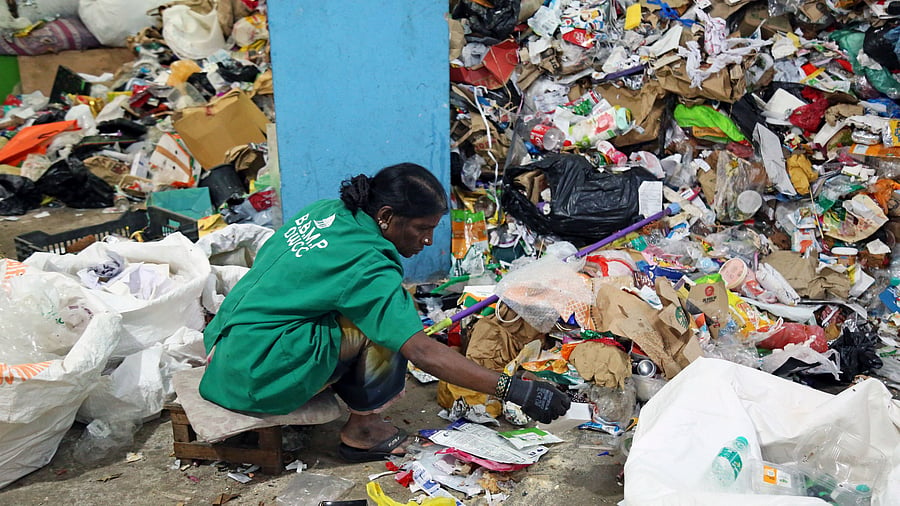
A BBMP worker segregates waste at a dry waste segregation unit in Jayanagar.
Credit: DH photo
Every day, Bengaluru discards nearly nine lakh sanitary pads, most of which end up mixed with dry waste. What ought to be treated as hazardous material is carelessly tossed into bins, exposing pourakarmikas and over 22,000 informal waste-pickers to infection and indignity. It was in 2016 that the erstwhile BBMP first urged residents to segregate sanitary pads, diapers, and medical waste.
However, nearly a decade later, segregation remains abysmally poor. Residents continue to mix medical waste with household garbage or dump it in neighbourhood blackspots.
At the end of this broken chain stand the city’s informal waste-pickers, men and women who handle rubbish with bare hands, often without gloves or masks, sifting through rotting piles that conceal bloodied pads, syringes and shards of glass. Many suffer infections, cuts, and chronic illnesses, even as their labour remains invisible and undervalued.
When citizens wrap sanitary pads and used syringes in flimsy plastic or newspaper, they disregard the health of those who keep the city clean. Unmarked and unsegregated medical waste carries a real risk of transmitting blood-borne diseases, while contaminating recyclable material that could otherwise sustain the livelihoods of informal waste-pickers. The #MarkItRed campaign, which encourages people to wrap sanitary and medical waste in paper, mark it with a red cross, and hand it over separately, has shown what responsible citizenship can achieve. In parts of JP Nagar, nearly 60% of such waste is now being disposed of correctly – proof that awareness, when backed by simple instruction, can spark behavioural change. This needs to be adopted across the state.
Unfortunately, the Greater Bengaluru Authority (GBA) is yet to establish a robust, city-wide protocol for the collection and disposal of domestic medical waste. There are no dedicated bins for hazardous household waste, and even where segregation occurs, it is often mixed during transportation or at secondary collection points.
The absence of standardised systems not only endangers workers but also nullifies citizens’ efforts to comply. The safe disposal of medical and sanitary waste is not a peripheral concern; it lies at the heart of urban public health and social equity.
Civic authorities must urgently install designated bins for medical waste, train collectors in proper handling, and ensure that sanitation workers are equipped with protective gear.
However, the apathy of the citizens remains the biggest stumbling block. Residents, too, must realise that their responsibility begins at home. Marking waste red is not a token gesture. It is a moral act of respect towards those who bear the city’s burden every single day.
